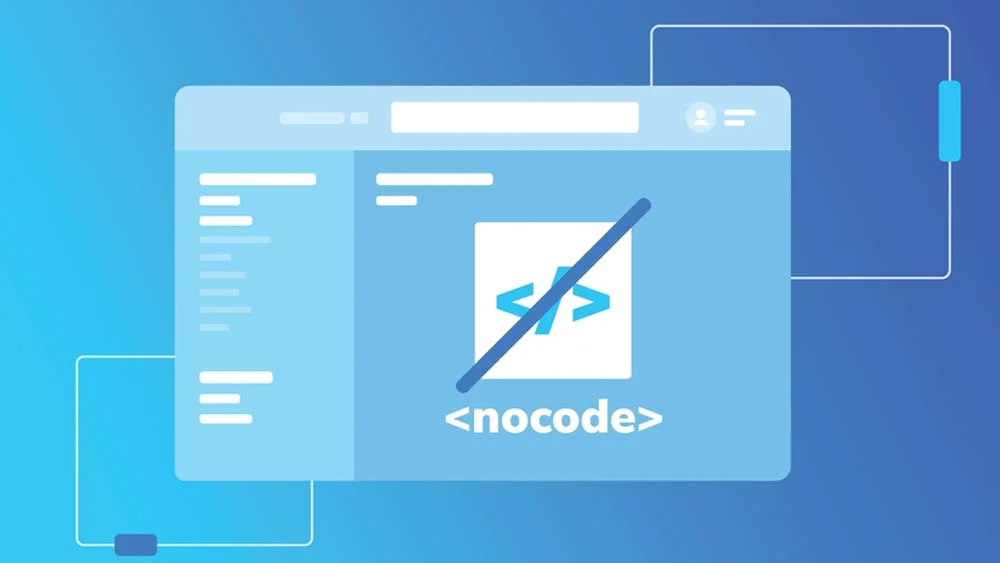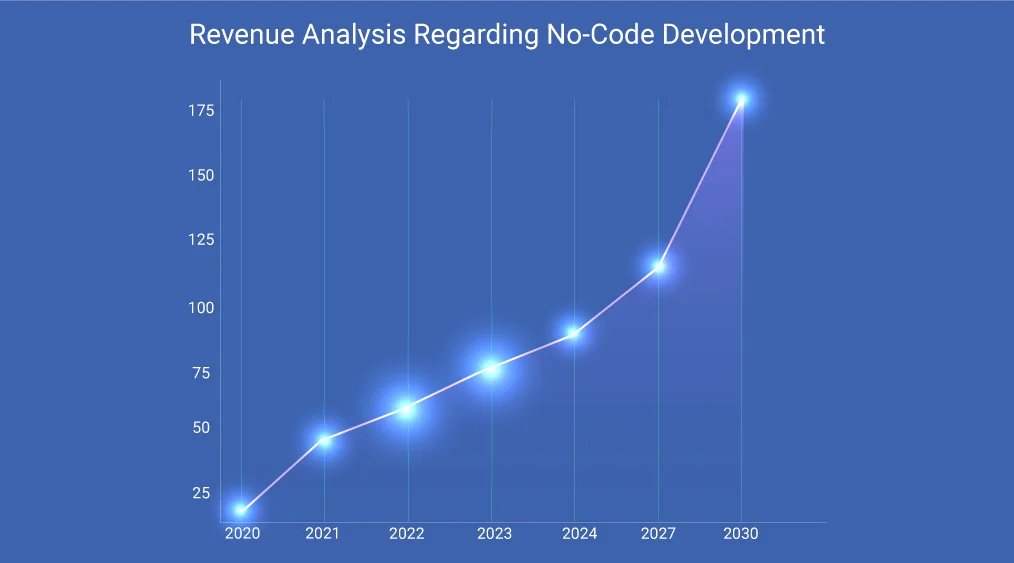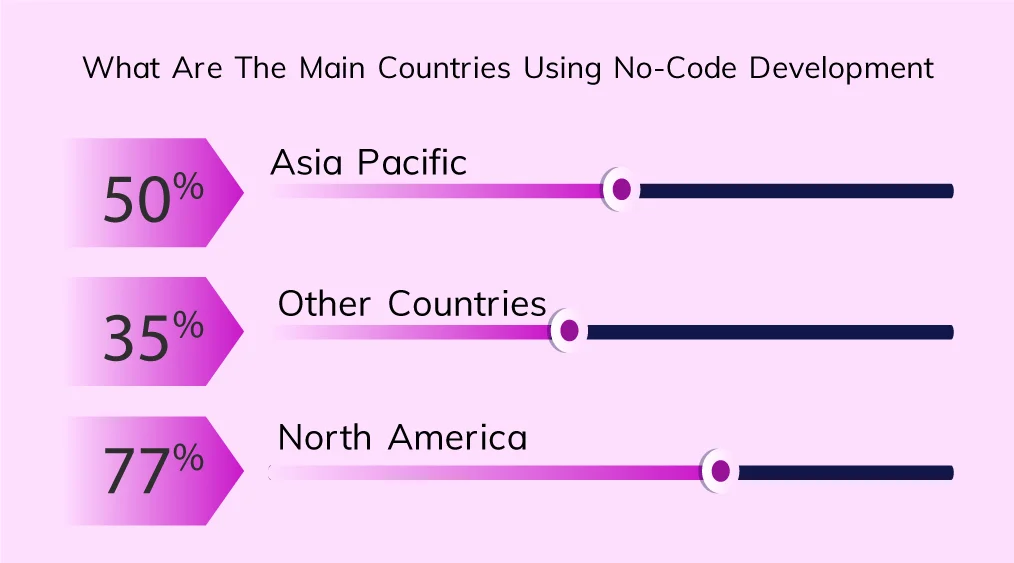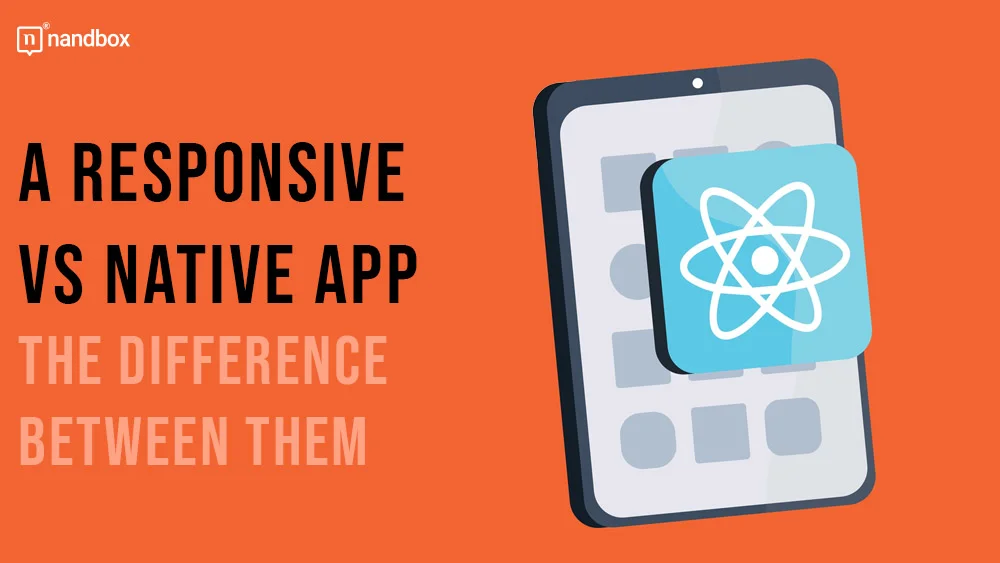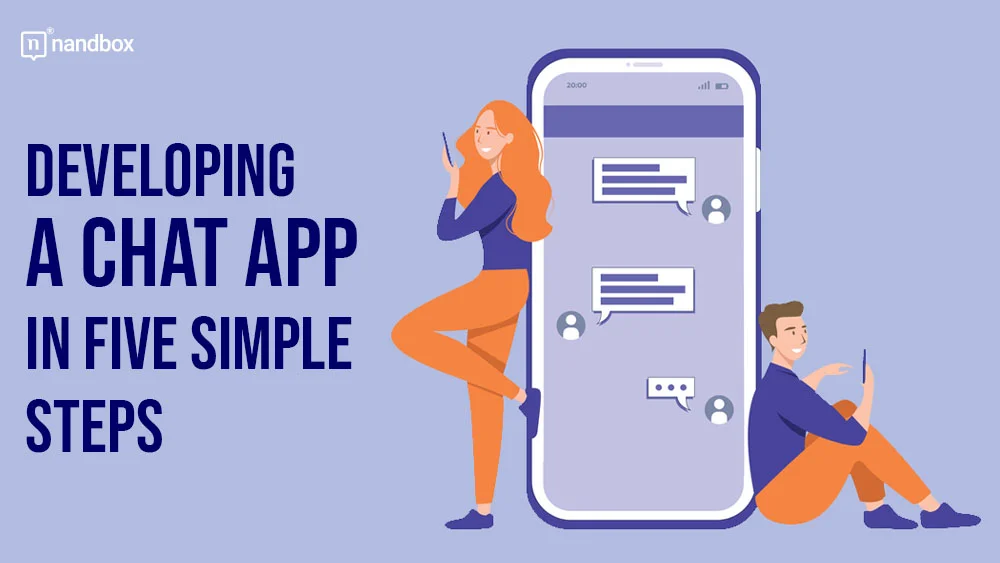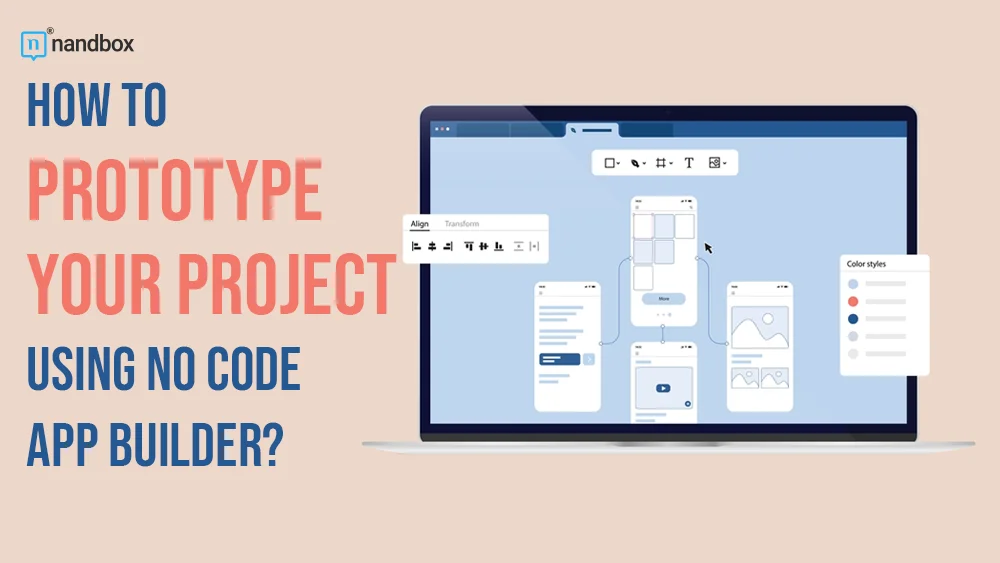When it comes to application development, a lot of new software development methods are emerging from thin air. That is, to help facilitate the process of developing an app. With each day that passes by us, the whole process gets easier and easier. That is thanks to the rise of the citizen development movement. Benefiting citizen developers by giving them methods of developing software through a streamlined platform. One like a no-code platform is something that is revolutionizing life as we know it.
The no-code development has experienced great growth as of the late years. However, the very first concept of no-code began with Microsoft’s Excel in 1985. Yes, I know that it might be of a surprise that it is THAT old. That is why, in this guide, we will explore together the history of no-code. Additionally, get to learn how it is doing nowadays in terms of market share and size.
We’ll dive into the comprehensive market share and size of no-code development platforms. Moreover, we will discuss key statistics that illustrate their rapid expansion. As no-code solutions continue to rise, they are disrupting traditional coding frameworks. This is making technology more approachable and shifting how businesses operate. Let’s uncover together how no-code is changing our perception of software creation and technological advancement.
The History of No-Code: Let’s Go Down The History Lane
The history of no-code development dates back to 1985, when Microsoft Excel introduced a revolutionary concept: enabling users to perform complex calculations and data analysis without writing a single line of code. This was the first step towards empowering non-technical users to create powerful tools without needing programming skills. But how did this evolve into the no-code platforms we see today?
Let me first give you a brief introduction of what a no-code solution is. A no-code solution is a tool that you can use to develop an app or software of something that only people with prior knowledge of coding or programming can actually develop. No-code refers to the fact that you won’t be using any coding. Something that makes it easy for citizen developers who may not be so familiar with coding or programming.
No-Code App Development: The Evolution of No-Code Platforms in The 2000s
As technology advanced, the 2000s witnessed the emergence of visual programming languages and early website builders like Dreamweaver and FrontPage, which simplified web development. The 2010s are known to have had a significant shift with the rise of WordPress, Shopify, and Wix. These are three main platforms that made website creation accessible to everyone. All you have to do is choose a template, customize it and voila! You have yourself a merry website! The question still remains: why did no-code platforms truly explode with success and expand in such a way in the recent years?
The demand for rapid application development and the scarcity of professional developers played a crucial role. Today, platforms like nandbox, Bubble, and Appinventiv have taken no-code to a whole new level. They are allowing the creation of sophisticated and seamless applications without any coding knowledge. In 2023, the integration of AI and automation further expanded the market, offering even greater flexibility. In 2024, these platforms are reshaping the path towards greater innovations. What will the future hold for this dynamic movement? Only time will tell us.
No-Code Development Solutions Vs. Legacy Systems
With the rise of no-code development, a question is always on people’s minds. Are no-code development platforms better than legacy systems? And if so, then why are they better? Let’s just say that there are certain pros to traditional development methods using legacy systems. However, the pros of no-code development surpass those belonging to legacy systems. No-code platforms offer a much more speedy development process. One that is incredibly simple. Unlike legacy systems, which require complex coding and a lengthy duration of time. No-code solutions allow you to build apps and websites in less time.
But time isn’t the only thing they save. Money is on the table here as well. That is because you only get to pay a fraction of the cost for a no-code app builder. Legacy systems often demand large investments. Yes, the outcome is one that is successful always, but if you don’t have what it takes to invest in a reputable technical team and ongoing maintenance for your app or website, legacy systems will fail to be the perfect solution here for you.
What about the flexibility of both methods? When it comes to adaptability, no-code solutions again win. That is, because they allow you to quickly scale or update your app while your business is evolving. Without further glorifications of no-code solutions, they simply win the race here. They are the best agile alternative to the rigid and costly nature of legacy systems, making them a smarter choice for businesses looking to innovate and grow.
A Market Overview of No-Code Platforms in 2024
If you’re familiar with Gartner, you will understand how important their research of the overall market overview in 2021 is. If you don’t know what Gartner is, allow me to enlighten you. Gartner is a leading global research and advisory firm that provides insights, advice, and tools for businesses. That is, especially in the fields of technology and IT. Founded in 1979, Gartner helps organizations take the right decisions through comprehensive research, analysis, and data. Their renowned “Magic Quadrant” reports rank technology vendors based on criteria like innovation, execution, and vision, offering a clear view of market leaders and trends.
In 2021, they conducted research to understand how the no-code development movement will advance in the future. The study concluded that around 70% of people will opt for no-code when it comes to developing applications by the end of 2024. This conclusion is more than enough to prove to us all that soon, most people will actually adopt no-code solutions to be their go-to tool to develop and build applications. Which again emphasizes the importance of what will become of these code-free technological platforms.
Revenue Analysis Regarding No-Code Development
If you’re into diving into a data pool of knowledge and crunching some numbers for lunch, you’ll love what comes next, as it is time for some statistics and some analysis. Let me start with the global market size growth:
- 2020: The global no-code development platform market was valued at approximately $12.8 billion.
- 2021: As a result of rising demand for digital transformation in the wake of the COVID-19 pandemic, the market grew to about $15.5 billion.
- 2022: Continued growth saw the market expand to $17.6 billion, with businesses increasingly adopting no-code solutions.
- 2023: At the end of 2023, the market had reached $20.4 billion, a clear sign of the rise in the popularity of no-code platforms. By 2023, an estimated 500,000 users were actively using no-code platforms.
- 2024: Gartner expects that investments in the no-code platforms will make an approximate number of $31.9 billion in revenue.
- 2027: Studies predict that by 2027, the no-code development market will earn around $65 billion.
- 2030: As of six years from now, the expected revenue that the no-code market is expected to generate by 2030 is around $187 billion.
Key Statistics and Facts of No-Code App Development That You Should Know
As mentioned before, the market for no-code development has expanded greatly. That is why I would like to go over some major statistics and facts that will help you understand how the no-code development movement is actually rising in today’s technological era.
- More than 68% of mobile app development will be through a no-code development platform by the end of 2024.
- Around 85% of people worldwide trust no-code tools, which contributes to how and why this is a development method that is in demand.
- A survey proved that around 95% of people are open to exploring no-code tools in the near future.
- When it comes to time reduction, no-code development methods have proven that they will reduce the time it takes people to develop an app by 90%.
- No-code solutions are additionally reducing app development costs by 65%
- By 2025, no-code solutions will develop 80% of applications.
- Around 47% of developers state that they are not equipped with the needed budget or tools that will help them develop an app in less time using traditional development coding methods. That is why no-code app builders are more efficient for them.
- Studies prove that 75% of businesses are willing to opt for no-code development solutions to develop applications for their businesses due to their ease of use.
- More than 22% of people use the word “ease of use” when describing the benefits of a no-code solution’s drag-and-drop interface.
- Less than 1% of the world’s population learns how to code and develop an app using traditional coding methods.
- There is a significant percentage of 85% of business enterprises that are currently using no-code development platforms to develop their own digital assets.
- Another significant percentage of 73% lies under the number of users who are currently using no-code platforms to develop or build an application in less than three months.
What Are The Main Countries Using No-Code Development?
Done with your stat studies? Let’s delve deeper into which countries are using the no-code development solutions that are sweeping us all off our feet in today’s digital era. There are many people using no-code development platforms globally and from all over the world. However, there are some countries that use them more than others and that is why I dedicate this paragraph to listing the top countries for you. USA and APAC countries are the top places around the world that have the highest rate of no-code development solution usage. Among the top five countries are the following ones:
- North America: this is the country that earned the highest place in the market, as the US alone holds a great percentage of 77% of using no-code development platforms. In fact, studies proved that three out of five employees develop apps using a no-code platform in the US.
- Asia Pacific: This is one region that is competing hard with the US as citizen developers there are increasing greatly. Covering around more than 50% of the region’s top developers and executives who are aiming to implement the usage of no-code development solutions in their businesses. According to a Nasscom report, India’s no-code market will reach a magnificent and stable rate of $4 billion by 2025. Causing the no-code market to have a greater rate of expansion and a whole new definition of potential.
- Other Countries: Main countries that are also shifting from traditional to no-code are Russia, Canada, Australia, Germany, and Türkiye. These are countries that also find that no-code development is on the move to create a revolution in today’s digital landscape. Which proves that the whole world is expecting great things from this method and is trying to free themselves from traditional development methods to explore new horizons and broaden their opportunity rates at having something better at their hands.
The Adoption of No-Code Development Platforms Across Industries
Now that you know the countries that are falling hard for no-code development, let us uncover the adoption of this marvelous innovation across industries. What industries are using no-code development platforms? The adoption of no-code development platforms is transforming industries, enabling businesses to build software solutions without needing extensive programming knowledge. Industries such as healthcare, finance, and education accounted for 40% of total market demand, with financial services being the largest adopter.
By the end of 2024, it’s predicted that the global no-code platform market will reach a value of $31.9 billion, signaling massive growth. By 2030, experts estimate that nearly 70% of all app development will be conducted on no-code platforms, allowing small businesses and startups to compete with larger enterprises. This shift is democratizing app creation, empowering non-technical teams to bring ideas to life without relying on IT departments.
As artificial intelligence and machine learning continue to evolve, no-code platforms will likely integrate more advanced capabilities, further simplifying complex workflows. In the near future, no-code solutions could become the backbone of digital strategies across sectors, allowing for rapid prototyping and scalable applications that keep up with technological advancements. The future is heading towards faster, more inclusive software development for all.
Top Benefits of Using a No-Code Solution For Your Needs
What are the top benefits of using a no-code solution for your needs? First and foremost, it saves you a lot of time. Traditional app development can take months and even a year sometimes. However, with no-code platforms, you can build and launch an app in just days or weeks. For example, a small retail business could quickly create a custom e-commerce app. That is, to better serve their customers without waiting on a developer. You choose a template, customize it, add your brand’s touch, and that’s it! You have an app that can compete in today’s vast app market.
But hey, is it cost-effective? The answer is absolutely! No-code solutions eliminate the need for expensive development teams. Instead of paying for programming expertise, you can simply drag and drop features, dramatically cutting down on costs.
Can non-tech teams use it? Yes! No-code platforms are designed for people without technical skills. That is, so marketing, sales, or HR teams can easily create apps tailored to their specific needs. It doesn’t matter whether it’s an internal communication tool or a customer engagement app. The main point is that it is possible.
What about flexibility? No-code platforms offer great flexibility, allowing you to tweak and scale your app as your business grows. So, whether you’re a startup or an established company, no-code solutions provide the speed, cost savings, and adaptability you need to thrive.
nandbox: Your Ultimate No-Code App Builder
Now I know that the market is vast and filled with a lot of no-code platforms. Ones that are reshaping the digital life as we know it. That is why I am here to guide you to the top app builder in the market. One that will help you create a seamlessly functional app without any coding or programming hassles. nandbox is a no-code mobile app builder designed to suit any business, community, or even government needs, regardless of size.
We’re here to help you keep up with today’s fast-changing market. With nandbox, you can build fully native mobile apps for both iOS and Android without needing any coding skills. Simply drag and drop features, and you’ll have your app ready—without any high development costs!
Our apps are completely native, meaning they’re built to run smoothly on either Android or iOS, with full access to important phone features like the camera, calendar, and contacts. In contrast, many of our competitors offer web-based apps, which run through a browser instead of being designed specifically for mobile. It’s worth noting that major apps like WhatsApp, Facebook, Instagram, and Snapchat are all native apps, ensuring a better user experience—just like the apps you can build with nandbox!
In Conclusion
No-code app development solutions are revolutionizing our lives. They are changing the way we perceive app development. Moreover, they’re changing the way they get complicated at some point in the process. All statistics and analysis point to the fact that they are driving us towards a new future that is filled with better and enhanced opportunities for app development. Their importance is marking its own place in history. All we have to do is give it more time to prove to us how good these tools will help us evolve in this continuously advancing technological generation. We’ll just have to wait and see.

